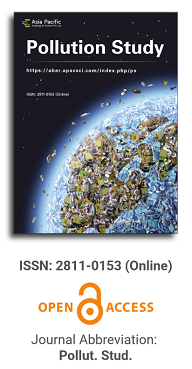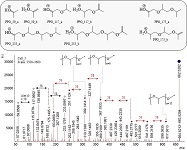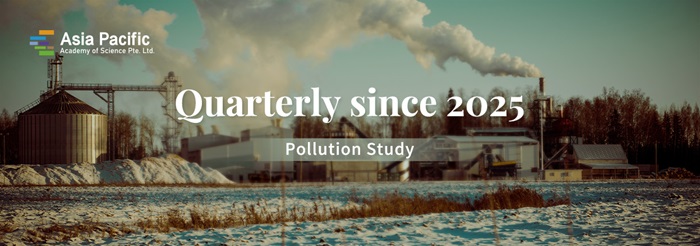
Asia Pacific Academy of Science Pte. Ltd. (APACSCI) specializes in international journal publishing. APACSCI adopts the open access publishing model and provides an important communication bridge for academic groups whose interest fields include engineering, technology, medicine, computer, mathematics, agriculture and forestry, and environment.

The (partial) replacement of synthetic polymers with bioplastics is due to increased production of conventional packaging plastics causing for severe environmental pollution with plastics waste. The bioplastics, however, represent complex mixtures of known and unknown (bio)polymers, fillers, plasticizers, stabilizers, flame retardant, pigments, antioxidants, hydrophobic polymers such as poly(lactic acid), polyethylene, polyesters, glycol, or poly(butylene succinate), and little is known of their chemical safety for both the environment and the human health. Polymerization reactions of bioplastics can produce no intentionally added chemicals to the bulk material, which could be toxic, as well. When polymers are used to food packing, then the latter chemicals could also migrate from the polymer to food. This fact compromises the safety for consumers, as well. The scarce data on chemical safety of bioplastics makes a gap in knowledge of their toxicity to humans and environment. Thus, development of exact analytical protocols for determining chemicals of bioplastics in environmental and food samples as well as packing polymers can only provide warrant for reliable conclusive evidence of their safety for both the human health and the environment. The task is compulsory according to legislation Directives valid to environmental protection, food control, and assessment of the risk to human health. The quantitative and structural determination of analytes is primary research task of analysis of polymers. The methods of mass spectrometry are fruitfully used for these purposes. Methodological development of exact analytical mass spectrometric tools for reliable structural analysis of bioplastics only guarantees their safety, efficacy, and quality to both humans and environment. This study, first, highlights innovative stochastic dynamics equations processing exactly mass spectrometric measurands and, thus, producing exact analyte quantification and 3D molecular and electronic structural analyses. There are determined synthetic polymers such as poly(ethylenglycol), poly(propylene glycol), and polyisoprene as well as biopolymers in bags for foodstuffs made from renewable cellulose and starch, and containing, in total within the 20,416–17,495 chemicals per sample of the composite biopolymers. Advantages of complementary employment in mass spectrometric methods and Fourier transform infrared spectroscopy is highlighted. The study utilizes ultra-high resolution electrospray ionization mass spectrometric and Fourier transform infrared spectroscopic data on biodegradable plastics bags for foodstuffs; high accuracy quantum chemical static methods, molecular dynamics; and chemometrics. There is achieved method performance |r| = 0.99981 determining poly(propylene glycol) in bag for foodstuff containing 20,416 species and using stochastic dynamics mass spectrometric formulas. The results highlight their great capability and applicability to the analytical science as well as relevance to both the fundamental research and to the industry.
Publication Frequency of PS changes to be quarterly! |
|
 |
|
| Posted: 2025-03-01 | More... |
Annual Letter of Gratitude from the Journal! |
|
| 2024 has drawn to a close, ushering in the fresh start of 2025, and we would like to extend our heartfelt gratitude to each and every one of you for your invaluable contributions to our journal. Your dedication and hard work have been instrumental in making this year a successful and fulfilling one for us. | |
| Posted: 2025-01-08 | More... |
Invitation to Participate in the UNEP Event! |
|
Photo by Jeremy Bishop on Unsplash |
|
| Posted: 2024-09-25 | More... |
Call for Submissions of Featured Articles |
|
| We sincerely invite scholars to submit featured articles to Pollution Study (PS, eISSN: 2811-0153). | |
| Posted: 2024-07-17 | More... |
Volume 5 Issue 1 Published Online |
|
We are pleased to inform all readers that Vol 5, No 1 (2024) has been published. This issue contains seven articles that focus on the latest research in the field of environmental science and pollution control. We would like to express our sincere thanks to the authors, editors, and reviewers who contributed to the publication of this issue. |
|
| Posted: 2024-06-30 | More... |
We are recruiting Editorial Board Members |
|
Pollution Study is recruiting new Editorial Board Members. |
|
| Posted: 2024-02-02 | More... |
Exploring Erhai Lake: Analyzing Water Quality and Pollution in Surrounding Rivers |
|
3.png) @Huang et al. |
|
| Posted: 2023-08-11 | More... |
Attention Scholars: Access Our Submission Guidelines |
|
To ensure that your submissions meet our journal's requirements and to enhance the efficiency of the review process, we encourage you to visit our journal's official website to access the submission guidelines. Adhering to the correct format and submission process will help expedite the handling of your manuscripts. Submission Guidelines: Click here to view the guidelines. |
|
| Posted: 2023-04-26 | |
Transition to Semi-Annual Publication |
|
| We are pleased to announce that starting in 2023, Pollution Study will transition from an annual publication to a semi-annual publication. | |
| Posted: 2023-01-01 | More... |
The 7th IMDC will be held in Busan |
|
 |
|
| Posted: 2022-08-10 | More... |
UNEP today announced its 2021 Champions of the Earth |
|
Figure 1. @UNEP/Roan Paul |
|
| Posted: 2022-06-07 | More... |
| 1 - 11 of 11 Items | |
.jpg)
Beijing University of Technology, China





